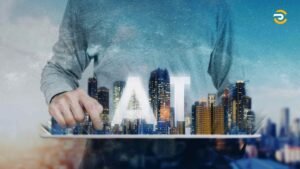Introduction
The realm of web design has undergone a remarkable transformation since the inception of the internet. From rudimentary HTML pages to visually captivating and dynamic websites, the evolution of web design has been characterized by an unwavering pursuit of embracing novel trends and pushing the boundaries. In this article, we will delve into the expedition of web design, illuminating pivotal trends that have molded its progression and contemplating the possibilities that lie ahead.
Early Days of Web Design
During its nascent stage, web design predominantly prioritized functionality over aesthetics. Websites primarily consisted of text-based content, incorporating limited graphics and basic layouts. Designers relied on HTML tables to structure the content, employing modest color schemes. User experience held little significance, leaving minimal room for creative expression.
Rise of Responsive Design
Because the Internet multiplied and mobile gadgets became more and more famous, the desire for responsive design emerged. The responsive layout allows websites to adapt to one-of-a-kind screen sizes and resolutions, presenting a top-quality viewing experience for customers across gadgets. This fashion revolutionized the internet layout, making it more accessible and person-pleasant.
Parallax Scrolling: Adding Depth
Parallax scrolling, a technique that imparts an illusion of depth by moving background and foreground elements at varying speeds, has emerged as a captivating element in web design. It infuses dynamism and engagement into websites, captivating users’ attention and delivering a memorable browsing experience. Storytelling websites often employ parallax scrolling to guide users through a narrative, utilizing visually captivating effects.
Mobile First: Designing for the Small Screen
With the proliferation of smartphones and the escalating number of mobile internet users, designing websites specifically for mobile devices has become imperative. The mobile-first approach entails crafting websites tailored to mobile devices first and subsequently scaling them up for larger screens. This strategy ensures optimal optimization for mobile users, providing a seamless experience across all devices.
Flat Design: Aesthetic Simplicity
Flat design, a minimalist design approach, centers around simplicity, employing clean lines, vibrant colors, and two-dimensional elements. This style eschews textures, gradients, and drop shadows, resulting in a clean and contemporary aesthetic. Flat design not only enhances visual allure but also bolsters website loading times and overall performance.
Material Design: The Art of Layering
Material design, a design language pioneered by Google, amalgamates flat design principles with subtle layering and lifelike motion. Its objective is to cultivate a sense of tactility and depth through the strategic utilization of shadows, light, and responsive animations. Material design endows websites with a visual hierarchy that steers users’ attention and amplifies the overall user experience.
Bold Typography: Making a Statement
Typography plays a pivotal role in web design, and in recent years, the prominence of bold typography has soared. Designers leverage large, bold fonts to make emphatic statements and evoke visual impact. Bold typography effectively conveys a brand’s personality, adds visual intrigue, and enhances readability. It has emerged as a potent tool for communicating messages and capturing users’ attention.
Dynamic Backgrounds: Engaging Visuals
Static backgrounds are gradually yielding to dynamic elements that breathe life into websites. Video backgrounds, particle effects, and animated illustrations are gaining increasing popularity. Dynamic backgrounds infuse visual allure, engender a sense of immersion, and render websites more unforgettable. By incorporating these captivating visuals, web designers can fashion an enthralling experience for users.
Microinteractions: Enhancing User Experience
Microinteractions are subtle yet interactive elements that offer feedback and augment the user experience. Examples include buttons that change color upon hovering, progress indicators, and animated icons. These intricate details imbue websites with responsiveness and interactivity, thereby improving overall usability and leaving a lasting impression on users.
Conclusion
Web design has evolved considerably through the years, pushed by a desire to create higher consumer stories and keep up with the changing times. From easy HTML pages to visually beautiful, interactive websites, designers have embraced trends and pushed boundaries. As we look to the future, we can expect even more interesting developments with the combination of AI, VR, and other rising technologies. The evolution of net design is an ongoing adventure, and we can’t wait to see what destiny holds.
FAQs
Q1: What does responsive design entail?
Responsive design encompasses an approach to web design that ensures websites adapt flawlessly to diverse screen sizes and resolutions, providing an optimal viewing experience across all devices.
Q2: Why does minimalism enjoy popularity in web design?
Minimalism is favored in web design due to its emphasis on simplicity, clean lines, and enhanced readability. By creating clutter-free interfaces, minimalistic design cultivates a superior user experience that aligns with contemporary design preferences.
Q3: What is the concept behind parallax scrolling?
Parallax scrolling is a technique that imparts an illusion of depth by moving background and foreground elements at varying speeds. It introduces dynamism and engagement to websites, capturing users’ attention and delivering an enthralling browsing experience.
Q4: What does the mobile-first approach entail in web design?
The mobile-first approach involves crafting websites specifically tailored for mobile devices before subsequently scaling them up for larger screens. This strategy ensures optimal optimization for mobile users, facilitating a seamless experience across all devices.





3 Responses
Your blog post had me hooked from the very beginning!
I just like the helpful information you provide in your articles
Very well presented. Every quote was awesome and thanks for sharing the content. Keep sharing and keep motivating others.